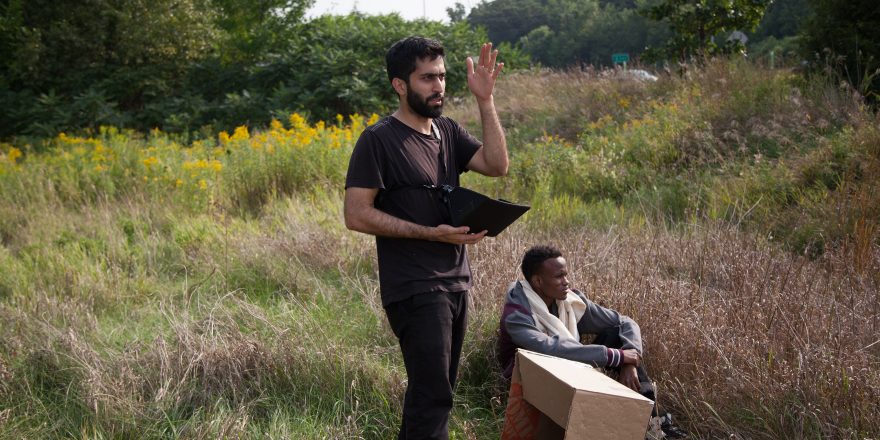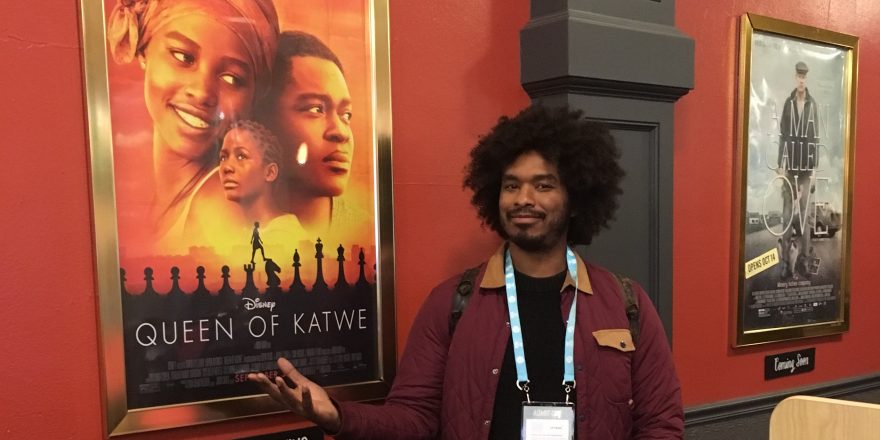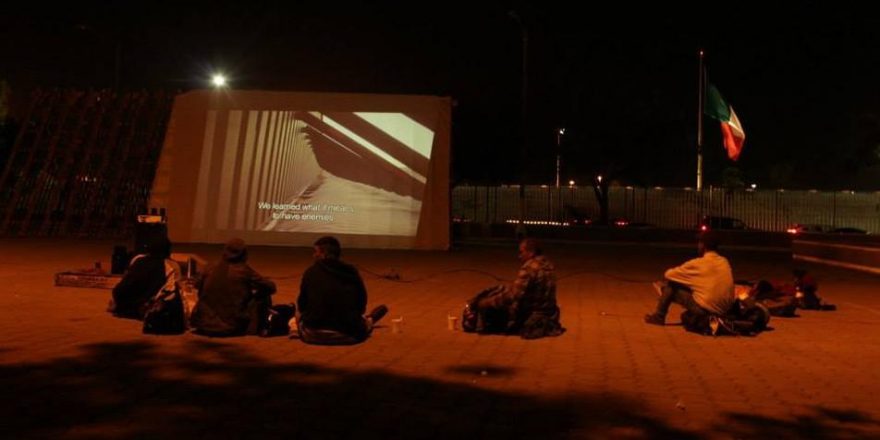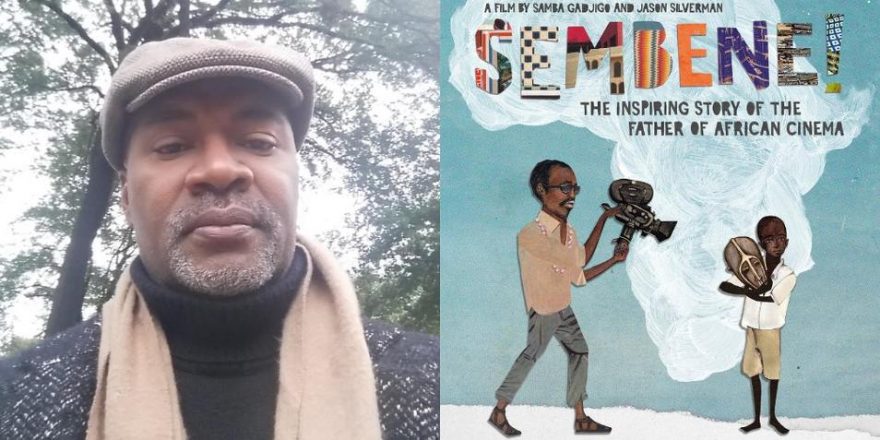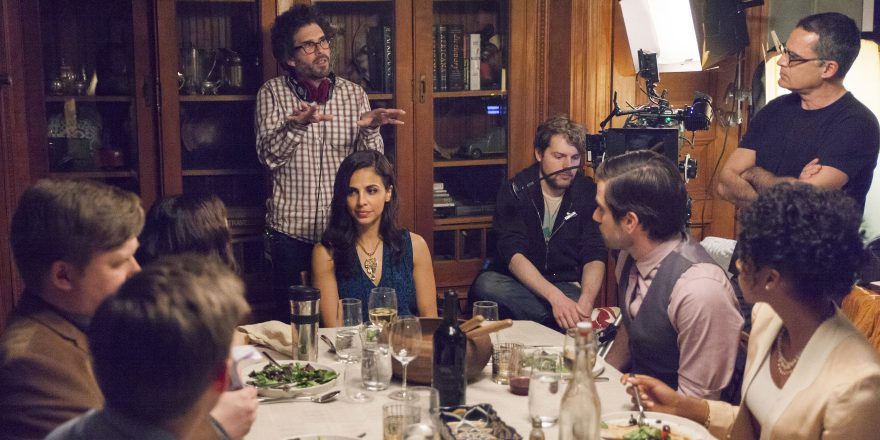The video seems to show a familiar scene: black youth protesting, cops forcefully, physically stopping them, clouds of teargas sending everyone running. The shaky camera roves through the coughing crowd, settling on a strangely intimate moment: one young man tilts a two-gallon bottle of milk over another protester’s face, rinsing his eyes. The camera whips back to the street, now empty except for the cops standing their ground.
But the protest documented here wasn’t demanding justice for the slaying of an unarmed man. It wasn’t calling attention to the police’s use of excessive force. The protest was against HBO.
An HBO pilot, currently in production, is set (and trying to shoot) in the protesters’ neighborhood, Cedar-Riverside, one of the hubs of Minneapolis’ large East African, predominantly Muslim community. Executive produced by Kathryn Bigelow and created by Somali Canadian hip-hop artist K’naan, Mogadishu, Minnesota was first announced under the title The Recruiters, and promised to “draw open an iron curtain behind which viewers will see the highly impenetrable world of Jihadi recruitment.” For folks in a neighborhood targeted by paid informants and dubious counterterrorism programs, that synopsis (which has since been revised to describe it as a “family drama”) seems only to validate their being treated as potential threats.
Watching the video, I thought about how, if circumstances were different, my most recent film could’ve been the object of protest. A Stray (which premiered at SXSW this year and is now playing) is set in the same neighborhood and was partially shot on the same street as that protest. It’s a coming-of-age story about a young Somali refugee and his unlikely bond with a stray dog. My film also features many of the same East African youth from the video, who, after the protest, have been called ignorant and stupid, and were deemed by one YouTube commenter to “have decided to follow the foot steps of american blacks and blame others for their shortcomings.”
The reality is that these youth understand the power of narrative better than most. When I first started research in Minneapolis in early 2015, I expected that I would be welcomed as an “award-winning filmmaker” and fellow Muslim who wanted to tell a story about their unique community. What I got was an education. As the youth made clear, not only did I have a lot to learn about the community, I also had a lot to reconsider about the nature of my craft, specifically the contest over the ownership of stories.
“The stakes need to be higher at the beginning — can he kill someone?” That was the note from an Angeleno screenwriter friend on an early draft. Apparently, my protagonist Adan needed to start off in a worse place than I had him, otherwise the story might seem like “fluff.”
The project of humanization is ultimately limited and one-sided: it can only ever be a response to dominant, dehumanizing narratives.In the next revision, I responded to that feedback and included slight, self-conscious references to petty theft, telling myself I was adding more dimension to a familiar trope. This time, I found a new reader: a young poet I got to know in Cedar-Riverside, who I’ll call Fadumo. Normally, I would be more reserved with a script, but I thought Fadumo would like it because I liked her work: fiery, damning, but funny stuff that came from a love for community. Little did I know, I would find myself the target of one of her poems. After reading the draft, Fadumo wrote a poem describing me as a “culture vulture,” among other things, and performed it live for my producer Jamila. She also sent me an email expressing her disappointment in the script, which boiled down to this line: “To me this film is about making a Somali boy who is involved in some shady activity seem human to the viewer.”
For many of us, that might not seem like a criticism at all but rather a worthy goal: to humanize the other. Probably every grant proposal I’ve ever written featured the word “humanize.” But Fadumo’s comment pointed out that the project of humanization is ultimately limited and one-sided: it can only ever be a response to dominant, dehumanizing narratives, favoring stories that implicitly reaffirm stereotypes even as they seek to subvert them.
So when TV shows or movies come into the neighborhood, offering roles for gangsters, pirates and would-be terrorists, being humanized is not enough. Fadumo knew that “humanization,” in seeking the exception, forgets the rule, forgets the actual community, and takes the story out of their hands.
All my films have been community-based and in production involved some navigation of the question “Who owns the story?” My earlier films started with very specific subjects that were far from the spotlight: a Ghanaian family living in the Bronx, a village of boat people in Kashmir. So the question wasn’t so contentious. But this film was entirely different. The Somali community in the Twin Cities, numbering in the tens of thousands, is a hypervisible black, immigrant, Muslim community in a Midwestern state represented not just by the likes of Al Franken but, until last year, Michele Bachmann. And after years of media misrepresentation, the community was eager to finally control its own narrative. I knew I would have to loosen my grip as director and find ways for collaborators to own more of my film.
So I sent the script to more people, which led to more difficult interactions. An imam tested me on my religious knowledge, an artist criticized me for whitewashing Somali culture, an activist knocked me for my portrayal of interactions with law enforcement. But through these conversations, the project took shape. The imam, Sheikh Hassan, opened his mosque to us and even acted in the film. The artist, Ifrah, took the lead female role, shot with us at the Somali Museum of Minnesota, and will perform an excerpt of her excellent “How to Have Fun in a Civil War” before our opening night screening. The activist, Burhan, continued to consult on the project and will be speaking this Saturday on a post-screening panel about the overreaches of law enforcement in black and Muslim communities. My ego might have taken a beating in the process, production might have moved more slowly, and the schedule was all over the place, but what’s best about the film, its intimacy, warmth and vivacity, was the direct result of individuals in the community holding my feet to the fire.
And because of Fadumo, the poet, I ended up including a scene of a poetry open mic. I set it in the same church basement that hosts real open mics, a vital, safe community space for organic expression. Jamila scrambled to fit it into the schedule, though in the end we had to recreate our own poetry reading. Though she declined to be on camera, Fadumo came to the shoot at Jamila’s invitation. I expected that she might be impressed. But all she said was, “You should’ve shot a real open mic.” And she was right.
However hard it was to hear at times, I’m glad I had input from Fadumo and others challenging me to do better, to work harder, to find a more open process. Filmmakers need voices like theirs, voices that do not ask to be given their humanity, but demand that we all bear witness to it.
It was a reminder that there’s more to be done.


